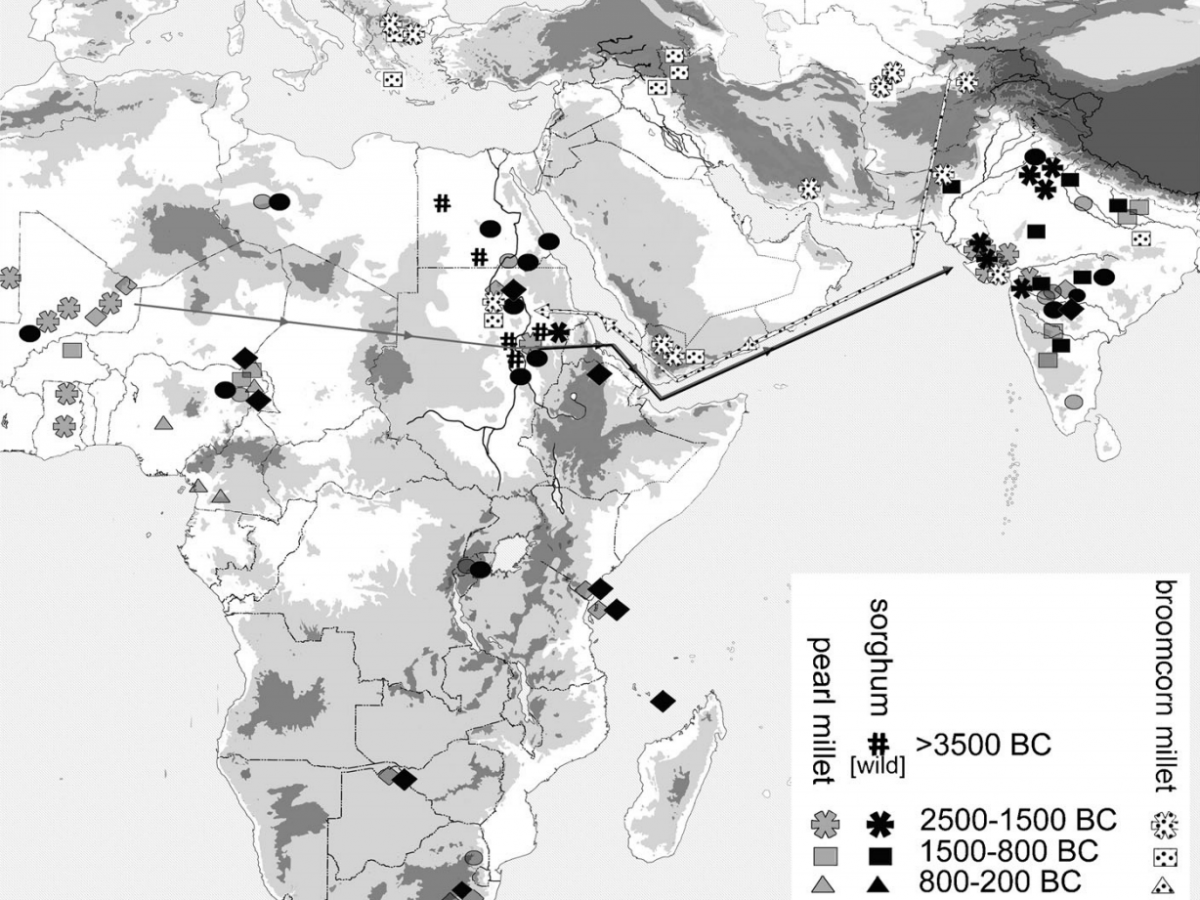Foodways: Africa and Indian Ocean
With a northern Mediterranean shoreline and the Indian Ocean to the east, Africa’s rich culinary bounty draws from lands both near and far. In the northeast, archaeological finds date Egypt’s important port cities back to 2500 BC. At the center of vast Mediterranean and Asian trade networks, the communities of Alexandria and other ports welcomed and introduced the continent to Asian spices such as ginger and garlic. Our research indicates that the Islamic Period of the 11th century brought ingredients and culinary knowledge from the Arabic diaspora across the Indian Ocean into Africa. Food across the African continent transformed as a result of this culinary exchange.
Archeo-botanical assemblages document the arrival of Asian staples such as rice, bananas, citron, and coconuts into an increasingly cosmopolitan cuisine. Though initially limited to the trading elite in ports dotting Africa’s northern and eastern coasts, these foods slowly came to be integrated into the general public. As part of the broader Islamic community, the Swahili coast in particular incorporated Asian ingredients such as basil and ginger into their local diet.
Some scholars have suggested that Africa’s contributions of sorghum, pearl millet and finger millet to the Indian subcontinent may have made two-season farming possible for the first time, greatly expanding the available food base in South Asia. It allowed for the cultivation of two new crops: coffee from Ethiopia and palm oil from West Africa. The earliest evidence of coffee beans entering Indian Ocean trade networks is around 1000 AD. By the 15th century, coffee became prevalent in the Middle East and coffee houses served as important trade brokerages in the region. In the 16th and 17th centuries, imperial ambition quickly spread the coffee plantations throughout Southeast Asia.
Although palm oil was used extensively in West African countries since 1500 BC, it was first cultivated overseas when the Dutch planted them in Javanese botanical gardens in 1848. It was then cultivated as a cash crop starting in 1905. We now see palm oil in almost every major food product we can buy.
For more details, you can refer to the following source.

